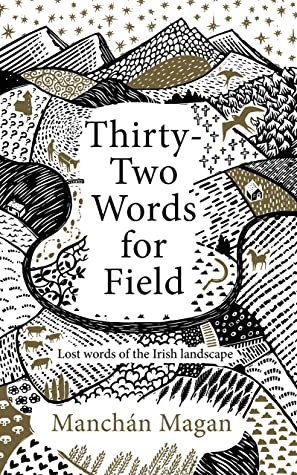Book review - Thirty-Two Words for Field: Lost Words of the Irish Landscape - Manchán Magan
I'm only at the start of my journey as a Gaeilgeoir but ‘Thirty-two words for field’ by Manchán Magan has really strengthened my grá for the language, and the reasons I want to learn it. Maybe some day I’ll try a book review as gaeilge, but for now I’m going to go ahead in bearla if that’s ok.
Nature
It's difficult to know where to even start with this fascinating, enthralling read, with the author making and exploring connections between the language and other cultures, its deep roots to nature, animals and mythology, even cosmology. I think in lesser hands, the eytymology of words may have came across as dry but in Manchán Magan’s hands it's anything but.
Too many favourite words in ‘32 words for field’, but I did like diadhánach - the lonely bellowing of a cow bereft of her calf. Or Iarmhaireacht - the loneliness felt at cockcrow, when you are the only person awake and experience that existential pang of disconnection, of not belonging.
Colonisation
The British knew what they were doing when they embarked on their colonisation of Ireland - wipe out the language and you erase a large part of peoples identity. One of the feelings I got reading ‘Thirty two words for field’ was Díláthair - the absence felt when something or somewhere has been depopulated or destroyed by other human beings. But I'm determined to continue to learn this rich, deep and evocative language of my ancestors.
Tír gan teanga, tír gan anam - a country without a language is a country without a soul.
Thirty two words for field summary
One of the most important things that this book brought home for me was the link between my ancestors and the natural landscape. It’s something that we have lost, sadly. But one of the ways we can reconnect is by using the language again - it gives us a window on the past. And place names have meaning. I come from a town called Keady, which means nothing anglicised. But An Ceide means flat topped hill, which makes much more sense, and you can see it’s origin.
I’ve also noticed as I expand my vocabulary that I can answer questions for people. Someone asked me recently about a certain place called Sallys hill - I was able to point to the willow trees and say that the Irish name is Saileach, There’s always an answer in nature.
Perhaps like me you’d fallen out of love with the language because of how it was taught at school (I had a nun who mostly taught us prayers and had a habit of shouting and beating us - not conducive to learning). This might just be the book to reignite your love for the teanga or it may inspire you if it’s the tongue of your ancestors. If it has, let me know in the comments as gaeilge!
‘32 words for field ‘ is a fascinating book on the ancients roots of a language that really spoke to my heart. (Before I forget I should also mention at this point that it’s beautifully illustrated.) Onwards with my language classes.
Book review - Thirty-two words for field by Manchán Magan
386 pages
September 4, 2020 by Gill Books



